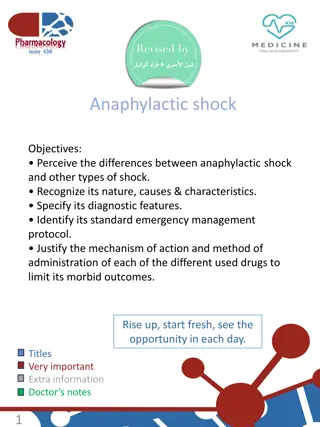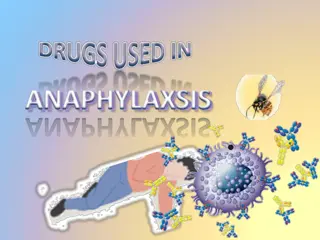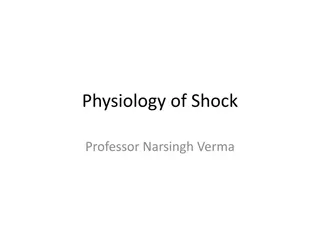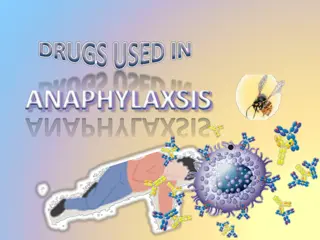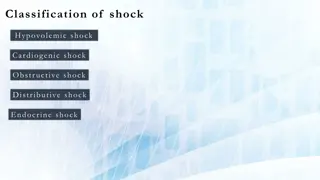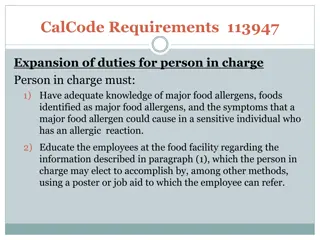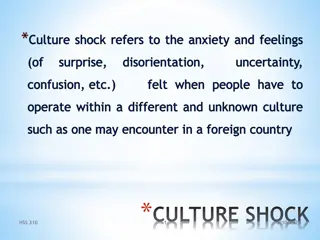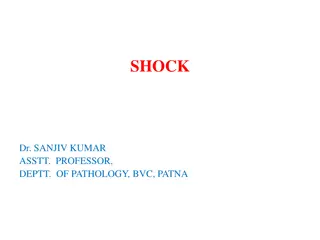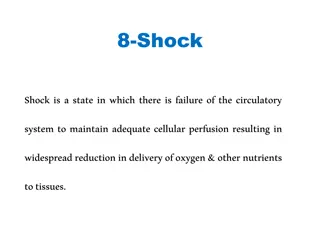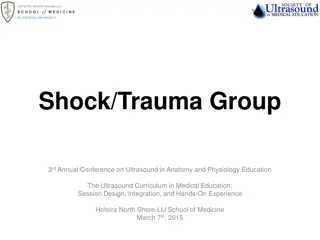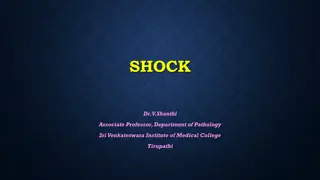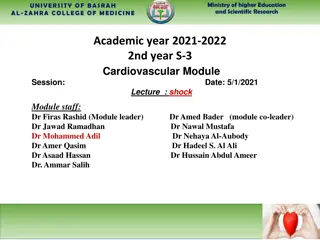Understanding Anaphylactic Shock: Causes, Symptoms, and Treatment
Anaphylactic shock is a serious, life-threatening allergic reaction that can rapidly escalate and potentially lead to death. Common triggers include insect bites or stings, foods, and medications. Symptoms range from skin itchiness and hives to respiratory difficulties and cardiac issues. Proper diagnosis, risk factors, prevention strategies, and emergency treatment protocols are crucial for managing anaphylaxis.
Download Presentation

Please find below an Image/Link to download the presentation.
The content on the website is provided AS IS for your information and personal use only. It may not be sold, licensed, or shared on other websites without obtaining consent from the author. Download presentation by click this link. If you encounter any issues during the download, it is possible that the publisher has removed the file from their server.
E N D
Presentation Transcript
ANAPHYLACTIC SHOCK What is it? Serious life threatening allergic reaction that is rapid in action and may cause death. Causes: Common causes include insects bite/stings, foods and medication
Symptoms Skin Itchiness rather burning sensation of skin Generalized hives Flushing &swelling of lips Swelling of tongue or throat in about 20% swelling of face Running nose &redness of conjunctiva Skin may also go blue due to lack of oxygen
Symptoms Respiratory: Shortness of breath wheezes caused by spasm of bronchial muscles and stridor is due to upper airways obstruction Hoarsness &pain with swallowing or cough Cardiac: Coronary artery spasm which may lead to myocardial infarction ,dysrrythmias &cardiac arrest caused by histamine release Low blood pressure and fast or low heart rate Rapid pulse
Symptoms Others: Abdominal pain ,diarrhea ,vomiting dizziness ,chest discomfort, slurred speech Confusion ,headache ,anxiety Urine incontinence ,pelvic pain Risk factors: People with ASTHMA ,ECZMA ,or ALLERGIC RHINITIS
Sensitivity tests on blood Patch test Challenge test Elimination test
Differetial diagnosis Asthma :no rash or itching Syncopy: No rash but pallor more marked Panic attack : No rash but flushing more marked than hives
Prevention Avoidance of triggers such as specific foods , environment, medications Desensitization to venoms e.g bee ,snake wasp, ants etc Oral immunotherapy mainly in food allergy e.g milk ,egg, nuts ,peanuts Preparedness: People prone to reaction are advised to wear a medical alert bracelet with all information or having a card Parents are advised to inform schools of their child s Allergy
Treament Anaphylaxis is an emergency condition that needs professional medical attention right away. Call 1122 Check the person's airway, breathing, and circulation (the ABC's of Basic Life Support). A warning sign of dangerous throat swelling is a very hoarse or whispered voice, or coarse sounds when the person is breathing in air. If necessary, begin rescue breathing and CPR. Calm and reassure the person. If the allergic reaction is from a bee sting, scrape the stinger off the skin with something firm (such as a fingernail or plastic credit card). Do not use tweezers -- squeezing the stinger will release more venom.
Treatment If the person has emergency allergy medicine on hand, help the person take or inject the medication. Avoid oral medication if the person is having difficulty breathing. Take steps to prevent shock. Have the person lie flat, raise the person's feet about 12 inches, and cover him or her with a coat or blanket. Do NOT place the person in this position if a head, neck, back, or leg injury is suspected, or if it causes discomfort. Do NOT place a pillow under the person's head if he or she is having trouble breathing. This can block the airways. Do NOT give the person anything by mouth if the person is having trouble breathing.
Prognosis Good when allergen is known and medical care available If Allergen is not known but preventive care is available and good then prognosis is good Death occurs usually in respiratory asphixia or cardiac symptoms Poor prognosis in old age Patient recovers in most cases if timely given care




